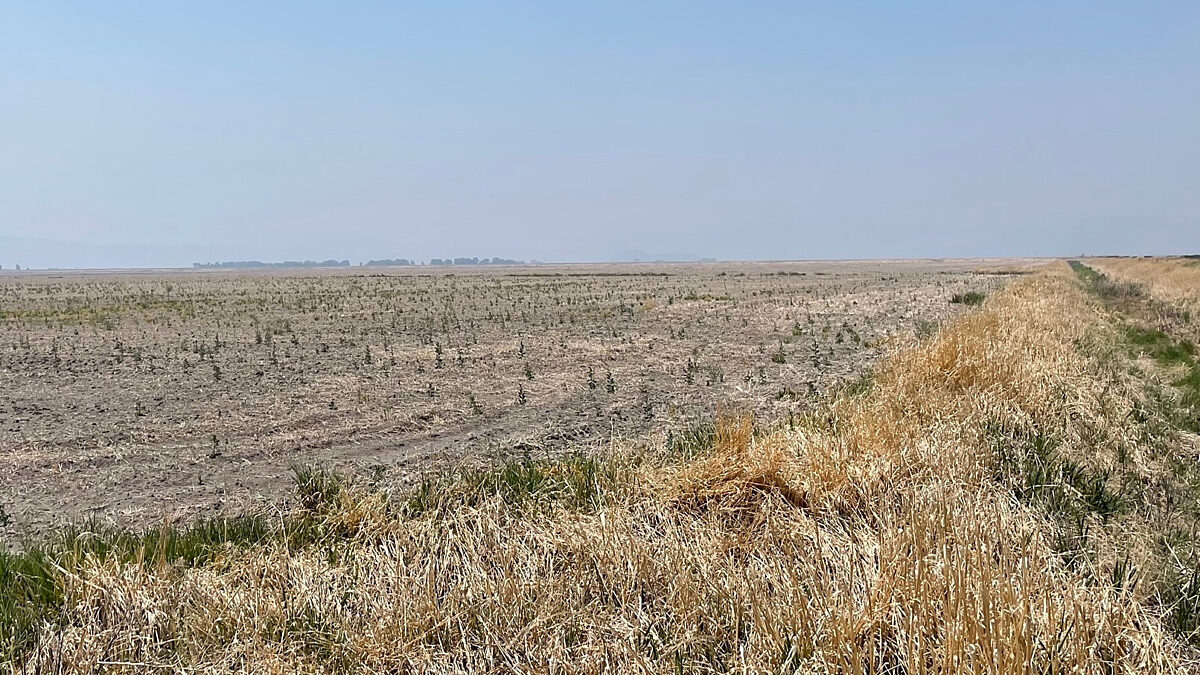California Agriculture Hung Out to Dry in Drought Crisis
Guest Author
Special Contributor to FB.org

photo credit: Jason Flowers, Used with Permission
Guest Author
Special Contributor to FB.org
California needs more than just a few heavy rain storms this year to pull out of the worst drought the state has seen. At this point, it will take 11 trillion gallons of rain, according to NASA. That 's enough water to fill Lake Meade – the nation 's largest reservoir – 1.5 times. In the meantime, wells are drying up, reservoir levels are dropping, and the cracks in the state 's water infrastructure are becoming all the more clear.
As the drought drags on and more cutbacks for agriculture have been announced, California 's water crisis has become more of a hot topic nationally. Although regions throughout the West are seeing extended droughts, it 's the size and severity in the Golden State that 's making everyone now take notice. California is in its fourth consecutive year of drought, but farmers started seeing water cutbacks well before the drought hit. In fact, farmers have lost 4 million acre feet of water per year compared to what they received 20 years ago – not for lack of water but for an abundance of regulatory restrictions cutting back the supply. This year, about 75 percent of California farmland will receive 20 percent or less of its normal water supply, and 44 percent of the state 's farmland will get no surface water this year. So if farmers aren 't guzzling up all the state 's water, then who is?
Today, half of California 's water use is environmental. Water gets flushed into the Pacific while farmland is fallowed. This is well off the mark of the original plan for California 's dramatic water management system. The Sacramento-San Joaquin River Delta is the largest in the country, and innovative Californians have been working to harness its power since the state began. Enter the Central Valley Project, which began in the 1930s and finally created a system of reservoirs and canals to move water throughout the state. Thanks to this federal water management project, cities along the Central Valley 's rivers were spared from flooding, and fertile soil down through the Valley became productive farmland. Unfortunately, parts of the project were abandoned in the 1970s, and the system hasn 't been updated since.
Meanwhile, a booming population and stricter environmental regulations are tightening a water supply system that hasn 't been upgraded in 50 years. (The state 's population has doubled in that same time.) California 's reservoirs and canals are showing their age. The current infrastructure was designed to depend on snowpack rather than rainfall, so even if the state were to see a series of torrential rainstorms this fall, much of that water would be lost. If California agriculture is to survive this drought – and ones to come – the water storage system must be addressed and updated.
Even with upgrades, farmers and ranchers need to be sure that they 'll have access to the water they need. Under the Endangered Species Act, regulators are now calling the shots on water use based on their discretion rather than what has been deemed safe and reasonable to protect the habitat of endangered species. These excessive restrictions tighten the water supply and ignore the reality of life in the Delta. It 's a fish eat fish world, and predatory species consume schools of endangered fish every year. Regardless, state water projects continue to pump below the optimum amount allowable under ESA rules as wells run dry.
Still, agriculture is targeted as the "largest consumer" of water in the state. California farmers in total use 40 percent of the state 's water. You cannot get around the need for water to make things grow. Water is the lifeblood of California agriculture, a $46.7-billion industry that creates 450,000 jobs, boosts the American agriculture industry and the national economy, and helps feed the world.
Kari Barbic is a media specialist for the American Farm Bureau Federation.